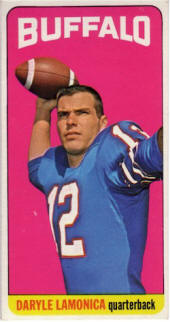The AFL, on the other hand, offered opportunity. In preparation for its first draft in November 1959, the league scoured small schools and found future stars such as Elbert Dubenion (Bluffton College) and Abner Haynes (North Texas State). Chiefs scout Lloyd Wells worked the black schools, and by 1966 eight of Kansas City's 22 starters were African-American—four of them from historically black schools. In the '67 draft the Chiefs took Notre Dame middle linebacker Jim Lynch (who was white) with the 47th pick and Lanier three spots later. In camp that summer coach Hank Stram told the two that the best player would win the starting job. "I wondered if there was going to be an open competition," says Lanier, "but from the start, it was refreshing to see there was a purity about the competition. One day Hank called us in and said he wanted the best guys on the field, and I was going to be the middle linebacker and Jim was going to play outside."
That season Lanier become pro football's first black starting middle linebacker. A year later the Denver Broncos' Marlin Briscoe was the first black starting quarterback in the modern era.
"Imagine if there had been no AFL and no Kansas City Chiefs," says Lanier, 63. "Maybe I have to wait five years for my chance [to play in the NFL], for the chance to play middle linebacker. And five years in football is an eternity." Lanier was inducted into the Pro Football Hall of Fame in 1986.
Official program photos for Super Bowl IV, in January 1970—the last before the NFL-AFL merger—show Kansas City with 19 black players; the Minnesota Vikings, 10. Of the six future Hall of Fame players on the Chiefs, four were black (Lanier, Bobby Bell, Buck Buchanan and Emmitt Thomas). Before he died in 2006, Hunt said that the Chiefs "never pretended we made a conscious effort to open things up [racially]. We made a conscious effort to go out and find the best players anywhere that we could."







